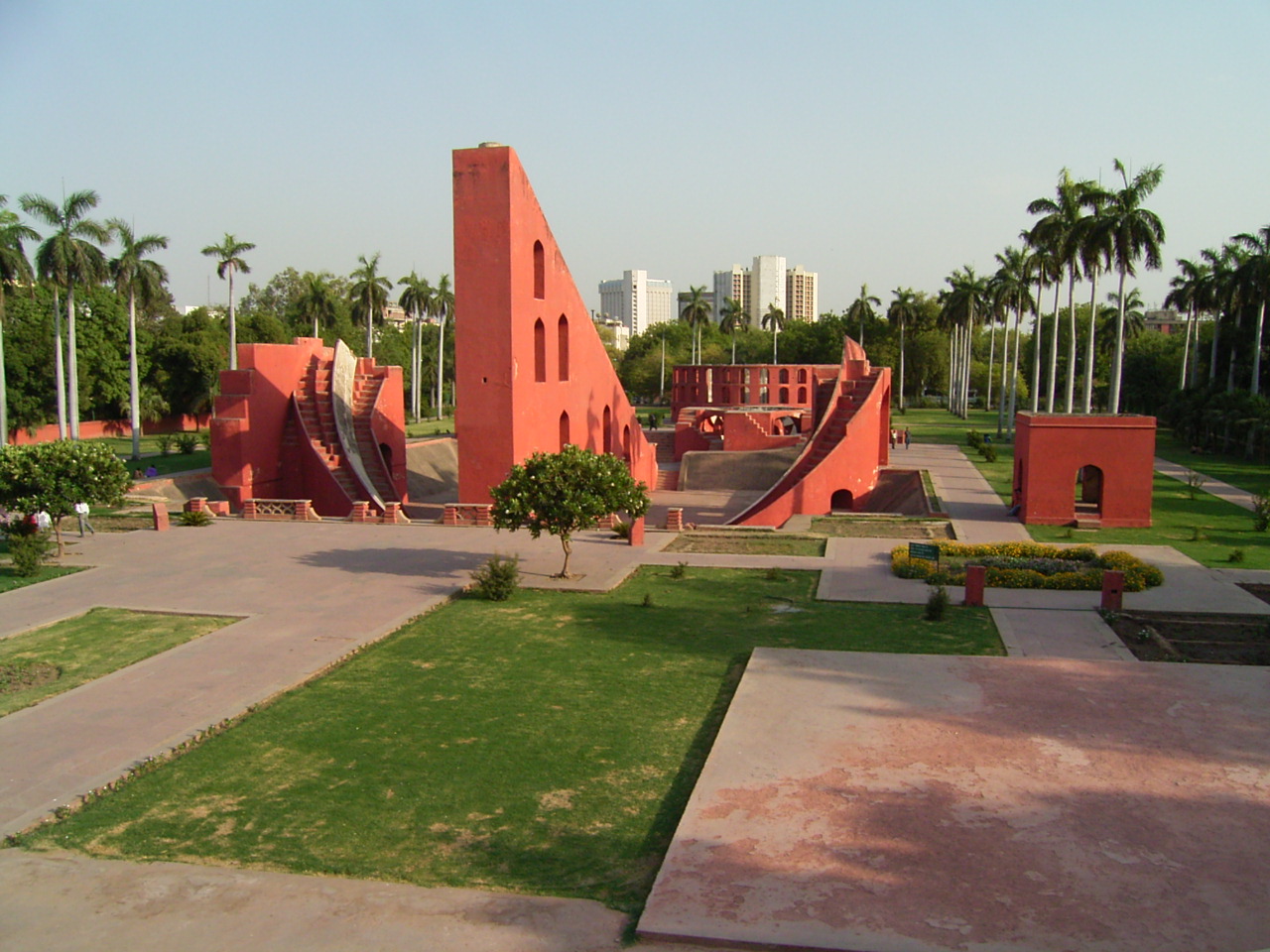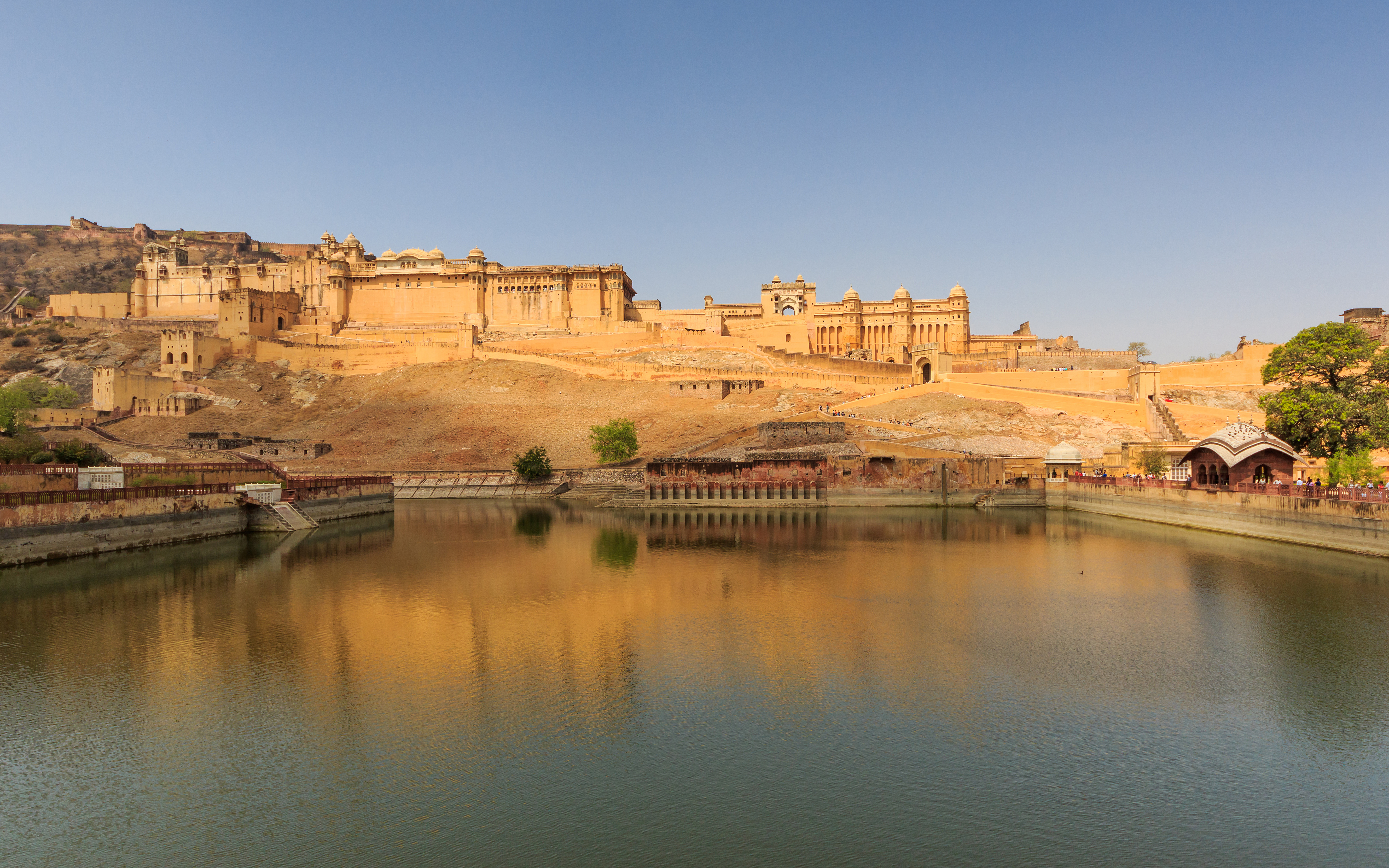|
Ishvari Singh
Ishvari Singh (1721 – 12 December 1750) was the Raja of Amber Kingdom (1743 – 1750). He was a son of Jai Singh II, Raja of Jaipur. Biography After the death of Jai Singh, his 25-year-old son Ishwari Singh ascended the throne. Madho Singh, half brother of Ishwari Singh laid siege around Jaipur in 1748 with the combined forces of the states of Kota, Bundi, Mewar and Marathas. Ishwari singh defeated the combined army at Battle of Rajamahal. The combined forces of Madho Singh got a battering at the hands of Ishwari Singh. It was a major victory for Jaipur and to commemorate this occasion, Ishwari Singh built a second storied tower in 1749 which got the name Isar laat popularly known as Sarga Suli in the Tripolia Bazar. A person named Ganesh Khowal was entrusted with its construction. All the 7 stories of Isat laat are octagonal and after every two storeys is a round gallery. Ishwari Singh lost at the Battle of Bagru, about 20–25 km from Jaipur. He was forced to give l ... [...More Info...] [...Related Items...] OR: [Wikipedia] [Google] [Baidu] |
Maharaja
Mahārāja (; also spelled Maharajah, Maharaj) is a Sanskrit title for a "great ruler", "great king" or " high king". A few ruled states informally called empires, including ruler raja Sri Gupta, founder of the ancient Indian Gupta Empire, and Chandragupta Maurya. 'Title inflation' soon led to most being rather mediocre or even petty in real power, which led to compound titles (among other efforts) being used in an attempt to distinguish some among their ranks. The female equivalent, Maharani (or Maharanee, Mahārājñī, Maharajin), denotes either the wife of a Maharaja (or Maharana etc.) or also, in states where it was customary, a woman ruling without a husband. The widow of a Maharaja is known as a Rajmata, "queen mother". Maharajakumar generally denotes a son of a Maharaja, but more specific titulatures are often used at each court, including Yuvaraja for the heir (the crown prince). The form "Maharaj" (without "-a") indicates a separation of noble and religious office ... [...More Info...] [...Related Items...] OR: [Wikipedia] [Google] [Baidu] |
Sawai (title)
Sawai is a title of honor used in the Indian subcontinent, the word having its root in Sanskrit language. Sawai literally means a quarter over one (1+1/4) in strength and / or intelligence. In other words it means - one and a quarter of an average man in worth. Holders of Sawai title * Sawai Madhavrao Peshwa aka Madhu Rao II Narayan was Peshwa of the Maratha Empire in India. He was the son of Narayanrao Peshwa and was brought to power as Peshwa by the treaty of Salbai in 1782. *Sawai Jai Singh was given title of ''Sawai'' at the age of eleven by the Mughal Emperor, Aurangzeb in the year 1699, who had summoned him to Delhi, impressed by his wit. Later he proved to be ''Sawai'' also in warfare. The title became hereditary for his successors used by his descendants like, Sawai Pratap Singh; Sawai Man Singh II. *Khengarji III ruler of Cutch from 1875–1942, was given the title of ''Sawai'' by British in the year 1885 The title became hereditary for his successors used by his descen ... [...More Info...] [...Related Items...] OR: [Wikipedia] [Google] [Baidu] |
Jaipur State
Jaipur State was a princely state in India during East India Company rule and thereafter under the British Raj. It signed a treaty creating a subsidiary alliance with the Company in 1818, after the Third Anglo-Maratha War. It acceded to independent India in 1947 and was integrated into India by 1949. Upon integration, the ruler was granted a pension (privy purse), certain privileges, and the use of the title ''Maharaja of Jaipur'' by the Government of India. However, the pension, privileges, and the use of the title were ended in 1971 by the 26th Amendment to the Constitution of India. History Jaipur's predecessor state was the Kingdom of Dhundhar founded in 1093 by Dullah Rai, also known as Dulha Rao. The state was known as Amber between the fourteenth century and 1727. In that year, a new capital was built and named Jayapura, when the kingdom was renamed as Jaipur. Mythical accounts The Kachwaha Rajputs claim descent from Kusha, son of the legendary Rama. Thei ... [...More Info...] [...Related Items...] OR: [Wikipedia] [Google] [Baidu] |
Jai Singh II
Jai Singh II (3 November 1681 – 21 September 1743) popularly known as Sawai Jai Singh was the 29th Kachwaha Rajput ruler of the Kingdom of Amber, who later founded the fortified city of Jaipur and made it his capital. He was born at Amber, the capital of the Kachwaha Rajputs. He became ruler of Amber at the age of 11 after the death of his father, Raja Bishan Singh on 31 December 1699. Initially, Jai Singh served as a vassal of the Mughal Empire. He was given title of ''Sawai'' by the Mughal Emperor Aurangzeb before the siege of Khelna in Deccan. "Sawai" means one and a quarter times superior to his contemporaries. He received title of '' Maharajah Sawai'', ''Raj Rajeshwar'', ''Shri Rajadhiraj'' in the year 1723, This was in addition to title of ''Saramad-i-Rajaha-i-Hind'' conferred on him on 21 April 1721Sarkar, Jadunath (1994) A History of Jaipur, New Delhi: Orient Blackswan, , Page=171,173 In the later part of his life, Jai Singh broke free from the Mughal hegemony, and t ... [...More Info...] [...Related Items...] OR: [Wikipedia] [Google] [Baidu] |
Madho Singh I
Madho Singh I (December 1728 – March 5, 1768) was ruler of the state of Jaipur in the present-day Indian state of Rajasthan.D.K. Taknet, Razia Grover, Nandita Bhardwaj, 2016Jaipur: Gem of India He was the younger son of Jai Singh II and became ruler of Jaipur after his brother Ishwari Singh's death. Biography Madho Singh I was at Udaipur when his half brother Ishwari Singh committed suicide. Following this Madho Singh was crowned as the king of Jaipur state. Madho Singh invited Jayappa Scindia who arrived in due time along with Malharrao Holkar to dinner where the Maratha sardars were served poisoned food which they detected and evaded in time. Next day on 10 January 1751, about 5000 Marathas marched through Jaipur and started exploring the city's temples and monuments. Marathas seemed to have behaved towards Jaipur like city taken by storms. Suddenly the pent-up hatred of the Rajputs burst forth and a riot broke out at noon and citizens attacked unsuspected Marathas. Mad ... [...More Info...] [...Related Items...] OR: [Wikipedia] [Google] [Baidu] |
Amer, India
Amber or Amer, is a city near Jaipur city in Jaipur district in the Indian state of Rajasthan. It is now a part of the Jaipur Municipal Corporation. The picturesque situation of Amber at the mouth of a rocky mountain gorge, in which nestles a lake, has attracted the admiration of travellers, including Victor Jacquemont and Reginald Heber. It is seen to be a remarkable example for its combined Rajput-Mughal architecture. The Amber Fort, a UNESCO World Heritage Site, is the top tourist attraction in the Jaipur area. History The state of Jaipur was earlier known as Amber or Dhundhar and was controlled by Meena chiefs of five different tribes who were under suzerainty of the Bargurjar Rajput Raja of Deoti. Later a Kachhwaha prince Dulha Rai destroyed the sovereignty of Meenas and also defeated Bargurjars of Deoli and took Dhundhar fully under Kachwaha rule. Much of the present structure known as Amber Fort is actually the palace built by Mughal Emperor Akbar's Navaratnas Raja ... [...More Info...] [...Related Items...] OR: [Wikipedia] [Google] [Baidu] |
Hinduism
Hinduism () is an Indian religion or '' dharma'', a religious and universal order or way of life by which followers abide. As a religion, it is the world's third-largest, with over 1.2–1.35 billion followers, or 15–16% of the global population, known as Hindus. The word ''Hindu'' is an exonym, and while Hinduism has been called the oldest religion in the world, many practitioners refer to their religion as '' Sanātana Dharma'' ( sa, सनातन धर्म, lit='the Eternal Dharma'), a modern usage, which refers to the idea that its origins lie beyond human history, as revealed in the Hindu texts. Another endonym is ''Vaidika dharma'', the dharma related to the Vedas. Hinduism is a diverse system of thought marked by a range of philosophies and shared concepts, rituals, cosmological systems, pilgrimage sites, and shared textual sources that discuss theology, metaphysics, mythology, Vedic yajna, yoga, agamic rituals, and temple building, among other to ... [...More Info...] [...Related Items...] OR: [Wikipedia] [Google] [Baidu] |
Amber Kingdom
Jaipur State was a princely state in India during East India Company rule and thereafter under the British Raj. It signed a treaty creating a subsidiary alliance with the Company in 1818, after the Third Anglo-Maratha War. It acceded to independent India in 1947 and was integrated into India by 1949. Upon integration, the ruler was granted a pension (privy purse), certain privileges, and the use of the title ''Maharaja of Jaipur'' by the Government of India. However, the pension, privileges, and the use of the title were ended in 1971 by the 26th Amendment to the Constitution of India. History Jaipur's predecessor state was the Kingdom of Dhundhar founded in 1093 by Dullah Rai, also known as Dulha Rao. The state was known as Amber between the fourteenth century and 1727. In that year, a new capital was built and named Jayapura, when the kingdom was renamed as Jaipur. Mythical accounts The Kachwaha Rajputs claim descent from Kusha, son of the legendary Rama. Their a ... [...More Info...] [...Related Items...] OR: [Wikipedia] [Google] [Baidu] |
Battle Of Rajamahal
The Battle of Rajamahal was a military engagement fought in 1747 in Jaipur, India. The battle was fought between the forces of Sawai Maharaja Ishwari Singh and Maharana Jagat Singh, who wanted to make his nephew Madho Singh the Maharaja of Jaipur or secure a Jagir for him, he built an alliance with the Maratha's under Khanderao Holkar and the Hada clan of Bundi and Kota. The battle resulted in a decisive victory for Ishwari Singh's forces. Background During the early 18th century, Maharaja Jai Singh II of Jaipur rose to power in India.Sir Jadunath Sarkar (1994). ''A History of Jaipur 1503–1938''. Orient Longman. . A member of the prominent Kachwaha caste, Jai transformed his domain into a powerful geopolitical force within the Mughal Empire. However, his death in 1743 resulted in a succession crisis to break out among the Kachawas. Jai's eldest son, Ishwari Singh, was named as the Maharaja of Jaipur per Kachwaha tradition; however, due to a treaty Jai had signed with his ... [...More Info...] [...Related Items...] OR: [Wikipedia] [Google] [Baidu] |
Battle Of Bagru
The Battle of Bagru was a military engagement fought between multiple Indian kingdoms in 1748 near the town of Bagru, Jaipur, India. The battle was fought during a succession crisis following the death of Jai Singh II, which left Jaipur without effective leadership. Background Jai Singh II, Maharajah of Jaipur and head of the powerful Kachhwaha caste, was a major geopolitical force in his lifetime. As a prominent figure within the Mughal Empire, Jai allied himself with several other powerful rajas; he was particularly close to Suraj Mal, Maharajah of Bharatpur, who considered Jai Singh to be like a father. When Jai Singh died on 21 September 1743, his 25-year-old son Ishwari Singh replaced him as Maharajah. However, Madho Singh, another of Jai Singh's sons from a different marriage, disagreed with his brother's accession to the throne and subsequent ruling of Jaipur; in 1747, he rose in revolt against his brother. Madho Singh's revolt was defeated at the Battle of Rajamahal, ... [...More Info...] [...Related Items...] OR: [Wikipedia] [Google] [Baidu] |
Battle Of Manupur (1748)
The Battle of Manupur was fought between the Mughal Empire and the Durrani Empire in March 1748 near Sirhind which ended in victory for the Mughals. Background Following the assassination of Nader Shah, last Emperor of the Persian Afsharid dynasty, Ahmad Shah Durrani took control of Persian Afghanistan. In late 1747, he began operations against the declining Mughal Empire, taking Kabul, Peshawar, and, on 18 January 1748, Lahore. By February 1748, a Mughal army under Prince Ahmad Shah Bahadur and Qamaruddin Khan, the Subahdar of Lahore province, had assembled and was moving to drive out the Durrani army. On 1 March 1748, Ahmad Shah began searching for the Mughal army, making contact with them on 10 March outside the village of Manupur. On the same time, the Rajput army of Jaipur under Ishvari Singh assembled near Manupur. Battle When the Mughal commander, Qamaruddin Khan, was killed by artillery in an early exchange of fire, his son, Moin-ul-Mulk, also known as Mir Mannu, con ... [...More Info...] [...Related Items...] OR: [Wikipedia] [Google] [Baidu] |
Ahmad Shah Durrani
Ahmad Shāh Durrānī ( ps, احمد شاه دراني; prs, احمد شاه درانی), also known as Ahmad Shāh Abdālī (), was the founder of the Durrani Empire and is regarded as the founder of the modern Afghanistan. In July 1747, Ahmad Shah was appointed as King of the Afghans by a ''loya jirga'' in Kandahar, where he set up his capital. Primarily with the support of the Pashtun tribes, Ahmad Shah pushed east towards the Mughal and Maratha Empires of India, west towards the disintegrating Afsharid Empire of Iran, and north towards the Khanate of Bukhara of Turkestan. Within a few years, he extended his control from Khorasan in the west to North India in the east, and from the Amu Darya in the north to the Arabian Sea in the south. Soon after accession, Ahmad Shah adopted the epithet ''Shāh Durr-i-Durrān'', "King, Pearl of Pearls", and changed the name of his Abdali tribe to "Durrani" after himself. The Tomb of Ahmad Shah Durrani is located in the center of Kan ... [...More Info...] [...Related Items...] OR: [Wikipedia] [Google] [Baidu] |








